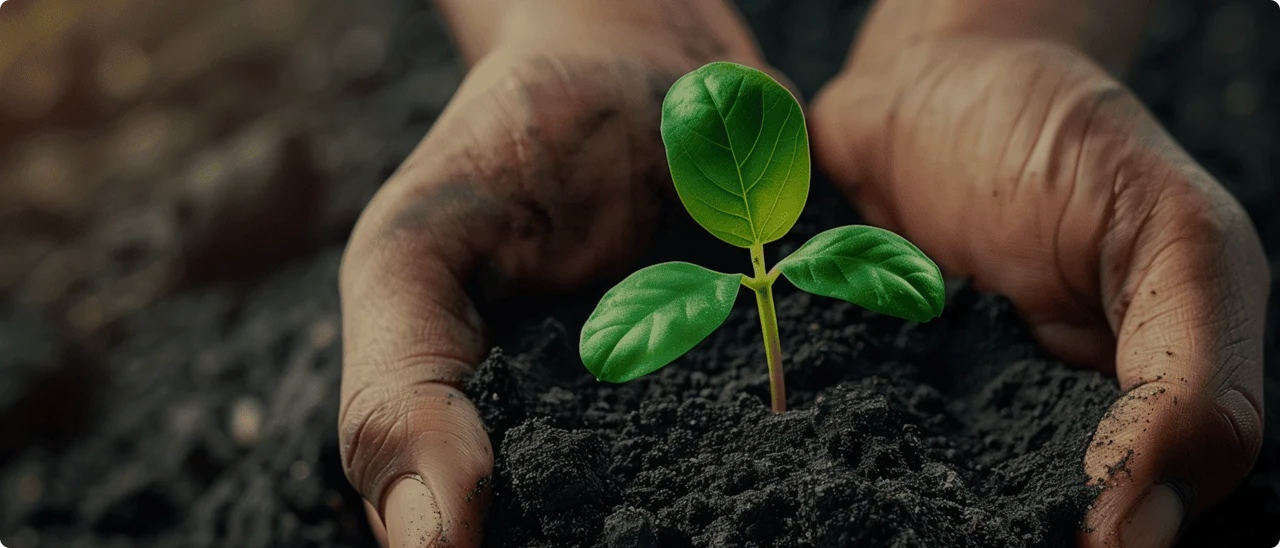As we learned in the article on integrated pest management, maintaining an acceptable, manageable, level of pests is key to keeping things in check. This naturally requires maintaining an environment which is conducive to plant health but much less inviting to unwanted creatures so as to keep as many out as possible, allowing you to keep things under control. Preventing hoards of pests from entering the garden in the first place is the best defense against any pest and prevention starts with keeping an eye out.
Monitoring: Avert with Your Gaze
An infestation and the subsequent damage from relentlessly reproductive pests can spread at an exponential rate. This is why it is imperative to regularly and attentively observe your crops, keeping a keen eye out for any signs of damage or other evidence a pest has set up residence on your plants. The earlier you can catch ‘em, the quicker you can control ‘em, the better off your garden. Be sure to spend some time every day carefully examining your plants, utilizing the information you will find in “Know Your Enemy” (article coming soon) to identify whether some unwanted creatures have made themselves at home.
Grow room glasses can really help you out with this process; we definitely recommend you keep this tool in your indoor garden. Not only will they protect your eyes and keep them sharp for spotting critters, the color correcting properties provide a clear view under various light sources to help you to identify pests with efficiency and accuracy. While these glasses may give you a cleaner image of your plants, it’s on you to clean everything else because...
A Clean Space is a Green Space:
Cleanliness is absolutely next to godliness when it comes to an indoor grow space! This we cannot stress enough; it is so incredibly important for the success of these types of gardens. We’re talking as close to sterile lab conditions as you can get. Think of your plants as the dependent variable of an experiment — all other organic material should be contained and only introduced under controlled circumstances. The more dirty supplies, plant debris, and excess water you have laying around, the more variables that could lead to failure.
Start every grow cycle by giving a deep, thorough clean to everything in your room. This will of course include sanitizing all equipment, including the hoods and glass of grow lights, pots and saucers, tools, etc., perhaps using a specialized product like Bio Green Clean to get the job done.
Once you’ve started growing, be sure to pick up any fallen leaves and other debris and sweep or vacuum up any dirt outside of pots, on a regular basis, throughout the entire growing cycle. It is also important, particularly when it comes to preventing soil dwelling creatures, such as fungus gnats, to clean up any standing water. Use trays and saucers, to keep any extra water contained and easy to get rid of. Excess water can also be removed from plants via a pump or a shop vac.
Getting rid of organic debris is important not only in the room but outside as well. There’s a very good chance of spider mites and other undesirable creatures lurking around said debris, just waiting to catch a ride inside. If you have spent considerable time outdoors, avoiding going directly into your grow room. Pests can easily attach themselves to clothing so changing clothes before entering your garden is a good idea. Mites also like to hitchhike on fur and given that most pets are pretty undiscerning about what they get into, keep your furry friends out of the garden.
Keep ‘Em Separated:
It probably goes without saying, if pests can hitch a ride on humans and animals, they can definitely make their way into your room via new plants. As you’ve probably discovered, spider mites in particular are a problem for almost any grower, and therefore there’s a good possibility if you pick up or purchase plants from an outside source, said plants may already have unwanted residents. Your best bet to remain as close to mite free as possible would be to only take cuttings from your own plants after you have ensured a pest free environment, or at least a pest level that is well under control.
But... we understand how enticing certain genetics from a pal might be, or perhaps you need clones before you have time to produce them yourself. In these cases, it is absolutely necessary to keep any new plants quarantined from the rest of your garden. This can be achieved by keeping the new plants in a separate room or if you’re short on space, a grow tent is a perfect alternative.
Be sure to regularly monitor for any signs of infestation for at least two weeks. If the plants show no signs of trouble, they can be safely introduced to the primary garden. If you do spot pests, assess the level of infestation of each particular plant to determine whether treatment is an option (article coming soon) or if it’s safer just to cut your losses and toss ‘em. If you must let an infested plant go, make sure it goes straight into the trash and not the compost pile, where the infestation can spread.
Keep ‘Em Out:
While taking the right steps to prevent bringing pests in yourself is important, they can certainly find ways in all on their own. Keeping bugs at bay requires building a barrier between your plants and the outside world. A good start would be to screen all of your intake and exhaust fans and vents. Bug Shield, Dust Shroom, and other intake filters are easy to apply, have very minimal effect on air flow but will stop insects as well as mold and mildew from getting into your space. It’s also a good idea to caulk and seal any windows or spaces in the room you suspect might be a critter gateway.
If keeping the outside out is one side of preventing a pest problem, creating an internal environment that promotes plant prosperity is certainly the other.
Goldilocks your Garden:
Maintaining healthy plants is one of the best preventative measures when it comes to pests. First of all, nothing smells sweeter to a pest than a plant in stress. Conversely a strong healthy plant releases terpenes and phenolic compounds which will deter pests. A healthy plant will have a strong immune system putting it in a better state to fight off pests and recover quickly from any damage. And as is true all living things, including pests, the more suitable the environmental conditions, the healthier, stronger and happier the living thing is. We must therefore create an environment in which the conditions are just right for our plants.
What Conditions Your Conditions Are In:
Something to note is that different pests thrive under very different conditions. For example, two very common pests, spider mites and fungus gnats, seem to be on opposite sides of the spectrum. Spider mites like it hot and dry, while fungus gnats like it cool and damp. While this may make it seem as though you’re doomed no matter what you do, this information should ultimately reinforce just how important it is to keep the temperature and humidity stable and cozy for your plants but not so cozy for their potential attackers. With modern technology this is pretty simple as there are an abundance of air conditioning systems, dehumidifiers as well as tools to measure temperature and humidity available. Maintaining adequate CO2 levels and even enriching the levels in your grow environment will also boost your plants overall wellbeing; CO2 is a fundamental part of photosynthesis.
Drown and Out:
Another crucial factor in plant health and subsequently pest prevention is that wonderful thing that all living things depend on: water. Here again, we see spider mites and fungus gnats sitting on either end of the spectrum, waiting for their opportunity to strike; under-water and send an invitation to mites that your plants are easy pickings, over-water and fungus gnats see an opportunity to party in your pots. Maintaining precise moisture levels is key to keeping plants pest free. It seems only natural then that moisture meters are a gardener’s true pal, as they do the work for you.
You can of course check moisture levels by hand to gauge the water content of your pots. After watering, lift your plant to determine how heavy it feels. When you lift the plant prior to watering again, you should notice a significant difference in the weight, meaning the water has been absorbed by your plant and it is ready for more. With some practice, you should be able to avoid overwatering with this method (but let’s face it, a moisture meter will save you a whole lot of guesswork … and physical work).
Maintaining correct moisture levels is also highly dependent upon the vessel and medium you’re plants reside in; pick the right pots in the first place and things will be much easier on you. This means choosing the appropriate size and type for the plants you’re trying to cultivate. It also means choosing pots that provide excellent drainage giving you more control over the moisture levels of your plants.
Choosing the right growing medium is also important in keeping soil dwelling moisture lovers, e.g. fungus gnats, in particular from moving in. Certain substrates that tend to stay saturated, such as peat moss and coco coir increase the likelihood of this type of infestation, so bear this in mind. If using soil, be sure to choose a soil that does not contain incompletely-composted organic matter as this may already be crawling with critters or at the very least draw them in. You will also want to make sure your soil has good drainage which can be increased by adding perlite or expanded clay pellets such as hydroton to your soil mixture.
So now we know the key steps to preventing an infestation: monitoring plants regularly, keeping a clean environment and providing environmental conditions that keep plants happy and healthy. But, as with most things in life, you can do everything right and still end up with a problem. Next week’s article, “Elimination & Restoration” is all about making that problem go away. Stay tuned!
Written by: Jorie Lott


